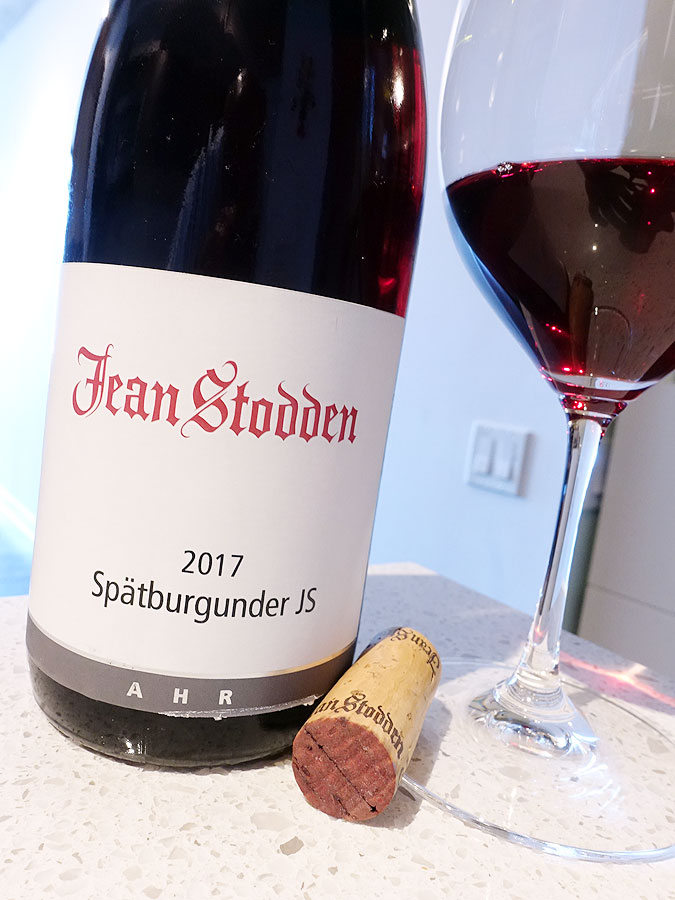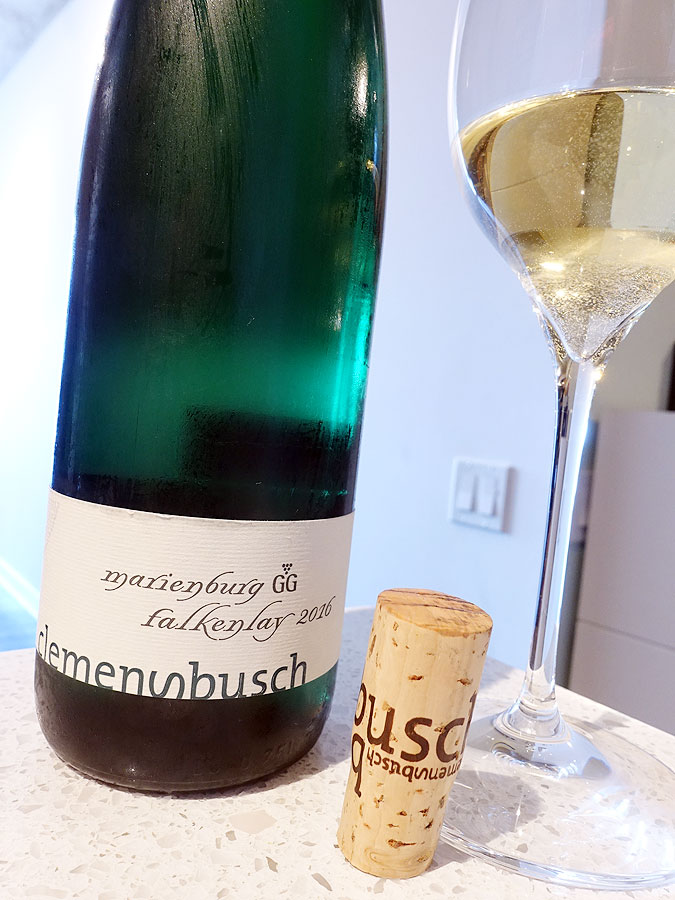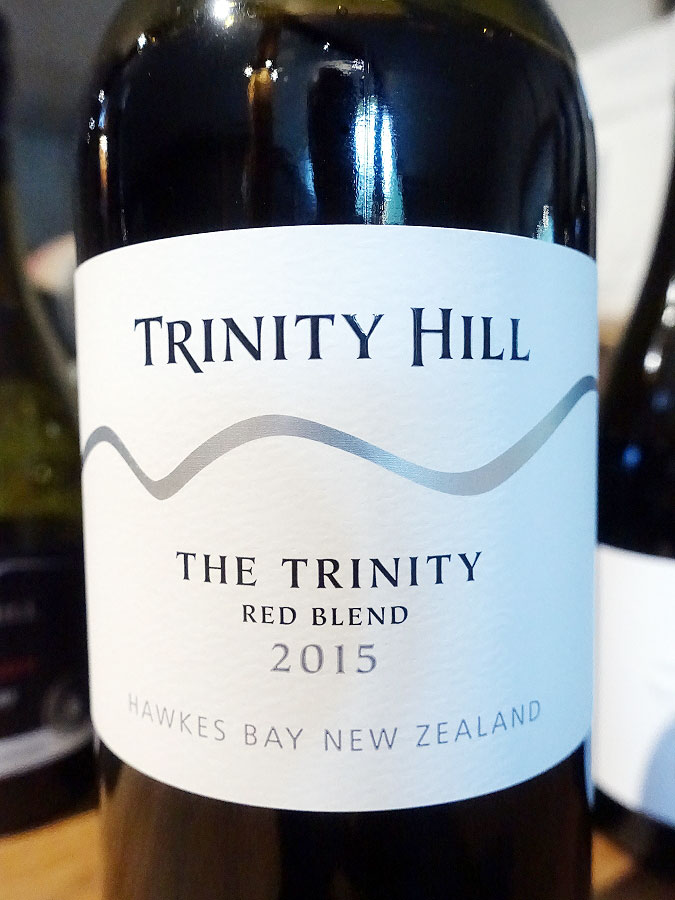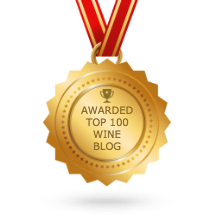Over the Civic Holiday long weekend, I had a great opportunity - thanks to Wines of Argentina! - to taste through and explore many lovely Argentine wines that will be arriving at the LCBO as part of the LCBO VINTAGES Release that features wines from Argentina.
In fact, there are more than 30 Argentine wines coming through LCBO VINTAGES this summer and fall - and I will be writing about nearly all of these over the coming weeks - but we'll begin our look at wines from Argentina with these 7 wines.
With 895 wineries, Argentina is the 5th largest wine producer globally and is 7th most in cultivated surface. Of course, Malbec is Argentina's flagship grape that we all know and love and is usually the first grape that comes to mind when we think of Argentine wine. However, only 22% (44,000 hectares) of Argentine vineyards are devoted to Malbec. Bonarda is currently Argentina's 2nd most planted grape with 18,000 hectares planted to this varietal. However, this was always not the case as Bonarda was the most planted grape in Argentina until the end of the last century. The 3rd most widely planted grape is Cabernet Sauvignon - and not far behind Bonarda in acreage - has been extensively researched in recent years. Not surprisingly, Cabernet Sauvignon expresses different profiles depending on where its grown, and in Argentina the trend has been to grown this varietal in colder, higher altitude zones. These three red grapes combine to make up the majority of Argentina's wine production, making Argentina very much a red wine producing nation.
However, with 36,000 hectares of vines planted to white grape varietals, Argentina does produce some white wines. Argentina has many old vineyards in perfect condition, but winemakers are also innovating by reconditioning and reviving old vineyards, as well as experimenting with earlier harvests that result in wines with higher acidity and lower alcohol. Winemakers are also exploring new regions for white wines such as at very high altitude sites, in poor, high drainage, calcareous soils, and different micro-climates within the desert regions of the Andes mountains and in Oceanic, coastal vineyards. Another area of experimentation is fermentation vessels such as using amphoras, spheres, and pressurized barrel fermenters. Torrontés Riojano - found only in Argentina - is the most widely planted white varietal at nearly 8,000 hectares, making it the country's signature white wine. The other white varietal of prominence is Chardonnay with almost 6,000 hectares planted. Sauvignon Blanc has seen explosive growth over the last 14 years to become the 3rd most planted white varietal. The final grape of note is Semillón - with 650 hectares planted - and it develops well in cool, moderate climates such as those found in the Uco Valley (Mendoza) and Rio Negro Upper Valley (Patagonia). The white wine below is a delightful blend of three of these varietals.
One of the most interesting aspects of winegrowing in Argentina is the landscape. Grapes are grown from 22° to 45° southern latitude along a strip that follows the Andes mountain range, and heights reaching up to an astounding 3,300 metres above sea level - which are among the highest in the world.
The Cuyo, in central western Argentina, contains 95% of the country's total acreage planted to vines. Located in the Cuyo are the wine regions of La Rioja, San Juan, and the heart of Argentine wine production - Mendoza. The highest peaks of the Andes are found in Mendoza, thus acting as a barrier to the humid winds from the Pacific Ocean. The altitude, continental climate, heterogeneity of soils, and snowmelt are key contributors to the production of excellent wines in the region. Mendoza is divided into 5 sub-regions - Valle de Uco (Tunuyán, Tupungato, and San Carlos), Primera Zone (Luján de Cuyo and Maipú), Northern Oasis (Lavalle and Las Heras), the East (San Martín, Rivadavia, Junín, Santa Rosa and La Paz), and the South (San Rafael, Malargüe and General Alvear). Moreover, new research has led to the identification of micro-regions within these terroirs, with new Geographical Indications (GIs) being certified as contributing distinctive characteristics to their wines.
Located north of Cuyo are the wine regions of Jujuy, Salta, Tucumán, and Catamarca, collectively known as The North. It is here that some of the world's highest-altitude vineyards are located. Viticultural tradition in the region can be traced back to the 18th century and primarily located in the Calchaquí Valleys - a system of mountains that formed 5 million years ago and stretch 270 km. The town of Cafayate, in Salta, is home to 60% all of vineyards in The North. The wines from this region are strongly influenced by the terroir and high altitude, with its arid and dry climate, very high average temperatures and diurnal temperature variation, long growing season, and sandy-loam soils. The Cabernet Sauvignon reviewed below is a great example from Cafayate.
The Patagonia and Atlantic Region is south of Cuyo and forms a large area that is flanked by low mountains to the west and extends to the ocean in the east. Five regions encompass the area - Neuquén is located to the southwest of La Pampa, while Río Negro is to the south and borders both regions. Newer projects have regions further to the south in Chubut, and towards the ocean to the east in Chapadmalal (Buenos Aires). It is interesting to note that the city of Buenos Aires has a wine consumption rate per capita that is 2nd only to Paris.
Wine reviews are provided below and all of these lovely wines will be in stores by . You will also be able to order them online at LCBO.com where Wines of Argentina is sponsoring an amazing contest to Win the Ultimate Backyard Makeover - a $10,000 grand prize that includes a Home Depot Gift Card and four premium cuts of 100% Argentine beef valued at $600. To enter this contest, simply spend at least $100 on LCBO.com - easily achieved by adding a few of these lovely Argentine wines to your shopping cart. This contest closes .
This blend of 35% Semillón, 35% Sauvignon Blanc, and 30% Torrontés was grown at 1,050 metres above sea level. It has a medium-high intensity, ripe nose of asparagus and grassy tones with some yellow floral, passion fruit, and lime citrus with touches of mineral adding complexity. It's medium+ bodied on the palate with very good concentration and zesty, limey acidity. Pleasing citrus, herbal, asparagus flavours with a fine, underlying minerality. It has a nice, chalky texture on the mid-palate while the finish is long and zesty. Agent: Profile Wine Group. Score: 90+ pts
LA MASCOTA ROSÉ 2019 - Mendoza, Argentina (#15182) (XD) - $16.95
Screw cap. This 100% Malbec Rosé has a medium+ intensity nose offering bright red berry, cherry, and strawberry aromas with touches of citrus, all of which come through nicely on the ripe red berry and citrus palate with some spice and floral notes adding interest to the flavour profile. It's somewhat fleshy on the mid-palate with bracing acidity. Nicely dry overall with subtle stony mineral and saline characters on the long, fresh finish. Very impressive. Agent: Univins and Spirits. Score: 89 pts
LUIGI BOSCA TERROIR LOS MIRADORES MALBEC 2017 - Uco Valley, Mendoza, Argentina (#568899) (XD) - $34.95
This single vineyard Malbec from vines averaging only 10 years old was grown at 1,150 metres above sea level. It has a clean, fresh, elegant, fragrant, and ripe nose of spice, stony mineral, violet, blackberry, and touches of herb. The spicy, medium bodied palate is ripe with very nice replays and sweet, elegant tannins and flavours of dark berry, blackberry, and violet accented with spice and stony minerals. It's juicy on the mid-palate with fresh acidity. Long, stony, spicy finish with subtle oak nuances. Lovely! Agent: FWM Canada. Score: 91 pts
LA MASCOTA MALBEC 2018 - Mendoza, Argentina (#555805) (XD) - $16.95
This Malbec was grown in deep, stony soils and aged for 12 months in new French and American oak barrels. The medium intensity nose has dark berry, black cherry, and white pepper spice aromas mingling with stony mineral and touches of plum, floral, and oak. It is medium-full bodied on the palate with dark berry, black cherry, white pepper spice, and oak influenced flavours. The smooth, rounded tannins have a slightly chalky texture, while acids are well-balanced. Very good length on the spicy, dark berry, and cocoa scented finish. A nice wine that I'd like to see with a little less oak. Agent: Univins and Spirits. Score: 88+ pts
LA CELIA RESERVA MALBEC/CABERNET FRANC 2017 - Uco Valley, Mendoza, Argentina (#618280) (XD) - $14.95
This co-fermented blend of 80% Malbec and 20% Cabernet Franc has a medium intensity nose that leads with woody, herbal, and green pepper tones backed by some red and dark currant aromas and subtle spiciness. It is medium+ bodied with herbal, woody, currant, and peppery spice flavours with well-integrated, subtly grippy, crunchy tannins. Acids are fresh, while the finish length is very good. Agent: Mark Anthony Wine & Spirits. Score: 87 pts
EL ESTECO 1947 OLD VINES CABERNET SAUVIGNON 2018 - Cafayate Valley, Salta, Argentina (#15082) (XD) - $24.95
From pergola-trained vines whose origins can be traced back to 1947, and raised entirely in cement egg with natural yeasts. Fresh, aromatic nose has herbaceous, paprika, olive, and minty notes with some cassis, red and black fruits and some minerals. It is full bodied on the complex palate with peppery, spice, paprika, olive, cassis, currant, herbal, and plum flavours with some earthiness supported by fresh acidity. Smooth, refined tannins have some grip on the back palate, while the long finish is earthy and stony with olive notes. Agent: Dandurand. Score: 90+ pts
LA POSTA ESTELA ARMANDO BONARDA 2018 - Mendoza, Argentina (#261586) (XD) - $15.95
From 50+ year old vines located in the Guaymallén region. Ripe and fruity nose with raspberry, blueberry, and spice. It's medium+ bodied on the fruity palate with raspberry, red berry and spice flavours balanced with fresh acidity and smooth, rounded tannins. The fruit and spice notes are joined by some chocolate notes on the finish, with very good length. Agent: Noble Estates Wine & Spirits. Score: 88 pts
In fact, there are more than 30 Argentine wines coming through LCBO VINTAGES this summer and fall - and I will be writing about nearly all of these over the coming weeks - but we'll begin our look at wines from Argentina with these 7 wines.
With 895 wineries, Argentina is the 5th largest wine producer globally and is 7th most in cultivated surface. Of course, Malbec is Argentina's flagship grape that we all know and love and is usually the first grape that comes to mind when we think of Argentine wine. However, only 22% (44,000 hectares) of Argentine vineyards are devoted to Malbec. Bonarda is currently Argentina's 2nd most planted grape with 18,000 hectares planted to this varietal. However, this was always not the case as Bonarda was the most planted grape in Argentina until the end of the last century. The 3rd most widely planted grape is Cabernet Sauvignon - and not far behind Bonarda in acreage - has been extensively researched in recent years. Not surprisingly, Cabernet Sauvignon expresses different profiles depending on where its grown, and in Argentina the trend has been to grown this varietal in colder, higher altitude zones. These three red grapes combine to make up the majority of Argentina's wine production, making Argentina very much a red wine producing nation.
However, with 36,000 hectares of vines planted to white grape varietals, Argentina does produce some white wines. Argentina has many old vineyards in perfect condition, but winemakers are also innovating by reconditioning and reviving old vineyards, as well as experimenting with earlier harvests that result in wines with higher acidity and lower alcohol. Winemakers are also exploring new regions for white wines such as at very high altitude sites, in poor, high drainage, calcareous soils, and different micro-climates within the desert regions of the Andes mountains and in Oceanic, coastal vineyards. Another area of experimentation is fermentation vessels such as using amphoras, spheres, and pressurized barrel fermenters. Torrontés Riojano - found only in Argentina - is the most widely planted white varietal at nearly 8,000 hectares, making it the country's signature white wine. The other white varietal of prominence is Chardonnay with almost 6,000 hectares planted. Sauvignon Blanc has seen explosive growth over the last 14 years to become the 3rd most planted white varietal. The final grape of note is Semillón - with 650 hectares planted - and it develops well in cool, moderate climates such as those found in the Uco Valley (Mendoza) and Rio Negro Upper Valley (Patagonia). The white wine below is a delightful blend of three of these varietals.
One of the most interesting aspects of winegrowing in Argentina is the landscape. Grapes are grown from 22° to 45° southern latitude along a strip that follows the Andes mountain range, and heights reaching up to an astounding 3,300 metres above sea level - which are among the highest in the world.
The Cuyo, in central western Argentina, contains 95% of the country's total acreage planted to vines. Located in the Cuyo are the wine regions of La Rioja, San Juan, and the heart of Argentine wine production - Mendoza. The highest peaks of the Andes are found in Mendoza, thus acting as a barrier to the humid winds from the Pacific Ocean. The altitude, continental climate, heterogeneity of soils, and snowmelt are key contributors to the production of excellent wines in the region. Mendoza is divided into 5 sub-regions - Valle de Uco (Tunuyán, Tupungato, and San Carlos), Primera Zone (Luján de Cuyo and Maipú), Northern Oasis (Lavalle and Las Heras), the East (San Martín, Rivadavia, Junín, Santa Rosa and La Paz), and the South (San Rafael, Malargüe and General Alvear). Moreover, new research has led to the identification of micro-regions within these terroirs, with new Geographical Indications (GIs) being certified as contributing distinctive characteristics to their wines.
Located north of Cuyo are the wine regions of Jujuy, Salta, Tucumán, and Catamarca, collectively known as The North. It is here that some of the world's highest-altitude vineyards are located. Viticultural tradition in the region can be traced back to the 18th century and primarily located in the Calchaquí Valleys - a system of mountains that formed 5 million years ago and stretch 270 km. The town of Cafayate, in Salta, is home to 60% all of vineyards in The North. The wines from this region are strongly influenced by the terroir and high altitude, with its arid and dry climate, very high average temperatures and diurnal temperature variation, long growing season, and sandy-loam soils. The Cabernet Sauvignon reviewed below is a great example from Cafayate.
The Patagonia and Atlantic Region is south of Cuyo and forms a large area that is flanked by low mountains to the west and extends to the ocean in the east. Five regions encompass the area - Neuquén is located to the southwest of La Pampa, while Río Negro is to the south and borders both regions. Newer projects have regions further to the south in Chubut, and towards the ocean to the east in Chapadmalal (Buenos Aires). It is interesting to note that the city of Buenos Aires has a wine consumption rate per capita that is 2nd only to Paris.
Wine reviews are provided below and all of these lovely wines will be in stores by . You will also be able to order them online at LCBO.com where Wines of Argentina is sponsoring an amazing contest to Win the Ultimate Backyard Makeover - a $10,000 grand prize that includes a Home Depot Gift Card and four premium cuts of 100% Argentine beef valued at $600. To enter this contest, simply spend at least $100 on LCBO.com - easily achieved by adding a few of these lovely Argentine wines to your shopping cart. This contest closes .
Tasting Notes:
SUSANA BALBO SIGNATURE WHITE BLEND 2018 - Uco Valley, Mendoza, Argentina (#558734) (XD) - $21.95This blend of 35% Semillón, 35% Sauvignon Blanc, and 30% Torrontés was grown at 1,050 metres above sea level. It has a medium-high intensity, ripe nose of asparagus and grassy tones with some yellow floral, passion fruit, and lime citrus with touches of mineral adding complexity. It's medium+ bodied on the palate with very good concentration and zesty, limey acidity. Pleasing citrus, herbal, asparagus flavours with a fine, underlying minerality. It has a nice, chalky texture on the mid-palate while the finish is long and zesty. Agent: Profile Wine Group. Score: 90+ pts
LA MASCOTA ROSÉ 2019 - Mendoza, Argentina (#15182) (XD) - $16.95
Screw cap. This 100% Malbec Rosé has a medium+ intensity nose offering bright red berry, cherry, and strawberry aromas with touches of citrus, all of which come through nicely on the ripe red berry and citrus palate with some spice and floral notes adding interest to the flavour profile. It's somewhat fleshy on the mid-palate with bracing acidity. Nicely dry overall with subtle stony mineral and saline characters on the long, fresh finish. Very impressive. Agent: Univins and Spirits. Score: 89 pts
LUIGI BOSCA TERROIR LOS MIRADORES MALBEC 2017 - Uco Valley, Mendoza, Argentina (#568899) (XD) - $34.95
This single vineyard Malbec from vines averaging only 10 years old was grown at 1,150 metres above sea level. It has a clean, fresh, elegant, fragrant, and ripe nose of spice, stony mineral, violet, blackberry, and touches of herb. The spicy, medium bodied palate is ripe with very nice replays and sweet, elegant tannins and flavours of dark berry, blackberry, and violet accented with spice and stony minerals. It's juicy on the mid-palate with fresh acidity. Long, stony, spicy finish with subtle oak nuances. Lovely! Agent: FWM Canada. Score: 91 pts
LA MASCOTA MALBEC 2018 - Mendoza, Argentina (#555805) (XD) - $16.95
This Malbec was grown in deep, stony soils and aged for 12 months in new French and American oak barrels. The medium intensity nose has dark berry, black cherry, and white pepper spice aromas mingling with stony mineral and touches of plum, floral, and oak. It is medium-full bodied on the palate with dark berry, black cherry, white pepper spice, and oak influenced flavours. The smooth, rounded tannins have a slightly chalky texture, while acids are well-balanced. Very good length on the spicy, dark berry, and cocoa scented finish. A nice wine that I'd like to see with a little less oak. Agent: Univins and Spirits. Score: 88+ pts
LA CELIA RESERVA MALBEC/CABERNET FRANC 2017 - Uco Valley, Mendoza, Argentina (#618280) (XD) - $14.95
This co-fermented blend of 80% Malbec and 20% Cabernet Franc has a medium intensity nose that leads with woody, herbal, and green pepper tones backed by some red and dark currant aromas and subtle spiciness. It is medium+ bodied with herbal, woody, currant, and peppery spice flavours with well-integrated, subtly grippy, crunchy tannins. Acids are fresh, while the finish length is very good. Agent: Mark Anthony Wine & Spirits. Score: 87 pts
EL ESTECO 1947 OLD VINES CABERNET SAUVIGNON 2018 - Cafayate Valley, Salta, Argentina (#15082) (XD) - $24.95
From pergola-trained vines whose origins can be traced back to 1947, and raised entirely in cement egg with natural yeasts. Fresh, aromatic nose has herbaceous, paprika, olive, and minty notes with some cassis, red and black fruits and some minerals. It is full bodied on the complex palate with peppery, spice, paprika, olive, cassis, currant, herbal, and plum flavours with some earthiness supported by fresh acidity. Smooth, refined tannins have some grip on the back palate, while the long finish is earthy and stony with olive notes. Agent: Dandurand. Score: 90+ pts
LA POSTA ESTELA ARMANDO BONARDA 2018 - Mendoza, Argentina (#261586) (XD) - $15.95
From 50+ year old vines located in the Guaymallén region. Ripe and fruity nose with raspberry, blueberry, and spice. It's medium+ bodied on the fruity palate with raspberry, red berry and spice flavours balanced with fresh acidity and smooth, rounded tannins. The fruit and spice notes are joined by some chocolate notes on the finish, with very good length. Agent: Noble Estates Wine & Spirits. Score: 88 pts





























































